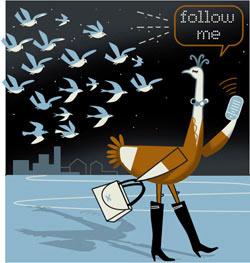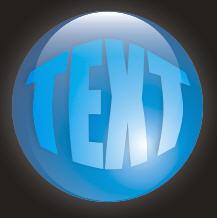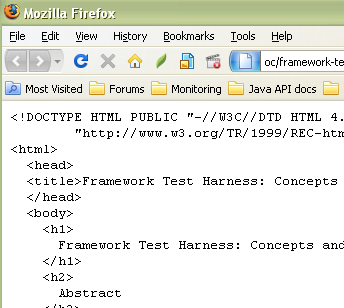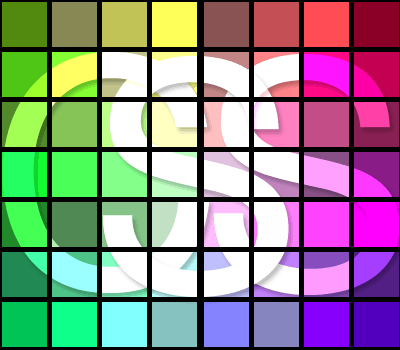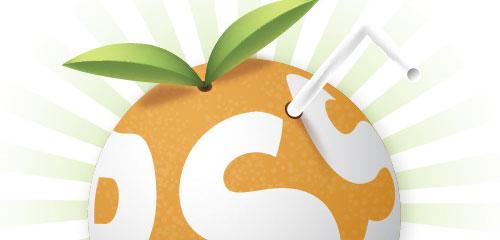
- •А.Д. Музафарова а.Г. Ковалева
- •Vocabulary practice section 1
- •Vocabulary practice section 2
- •Vocabulary practice section 3
- •This week: software
- •Vocabulary practice section 1
- •Vocabulary practice section 2
- •Internet: Voice recognition takes off
- •Programming languages.
- •Vocabulary practice section 1
- •Vocabulary practice section 2
- •Int — international organization
- •Vocabulary practice section 3
- •The 15 enemies of the Internet
- •Internet crime
- •Vocabulary practice section 1
- •Vocabulary practice section 2
- •Vocabulary practice section 3
- •How a virus infects a program
- •Vocabulary practice section 1
- •Video Games
- •Vocabulary practice section 2
- •Vocabulary practice setion 3
- •Vocabulary practice setion 4
- •Twitter's transmitters
- •Vocabulary practice section 1
- •Good Web Design? What Is It?
- •Vocabulary practice section 2
- •Vocabulary practice section 3
- •Top Five Ways to Make Your Site More Popular
- •1. Strong Hosting
- •2. Optimize Your Website
- •3. Take Advantage of Social Media Optimization
- •4. Get Your Visitors Involved
- •5. Emphasize Usability in Your Design
- •You’ve been in graphics too long if…
- •Internet
- •Web design
Twitter's transmitters
|
Illustration by Ian Whadcock |
BIZ STONE, one of Twitter’s co-founders, uses the term “social alchemy” to describe the way in which short, seemingly inconsequential 140-character messages are often transformed into something of real value. Imagine, he says, that you are having a drink at an airport bar waiting to catch your flight. You send out a tweet explaining where you are and what you are drinking. Perhaps you get no response. But it is also possible that a friend who is “following” you on Twitter happens to be in the airport at the same time, |
sees your tweet and comes over to say hello. Thus what would otherwise have been a solitary moment is magically transformed into a pleasant encounter.
Such serendipity helped Twitter attract 58m web visitors in October last year, according to comScore. Recently its growth appears to have faltered in America, but the service is still expanding in countries such as Japan and Germany. This has led to speculation that it could eventually make a dent in Facebook’s fortunes, even though size-wise it is not in the same league. Those who see a looming clash note that both companies are in the business of helping people to share information, and both have a real-time element to their services.
That is true, but the services differ in two important respects. The first is the nature of the relationships that underlie them. On Facebook, users can communicate directly only if one of them has agreed to be a “friend” of the other. On Twitter, people can sign up to follow any public tweets they like. The service, which boasts Ashton Kutcher (4.3m followers) and Oprah Winfrey (3m) among its most popular users, is in essence a broadcasting system that lets users transmit short bursts of information to lots of strangers as well as to their pals. Facebook, for its part, is more of an intimate, continuing conversation between friends.
This difference is revealed in research conducted by Mikolaj Jan Piskorski, a professor at Harvard Business School, and one of his MBA students, Bill Heil. They surveyed just over 300,000 Twitter users in May 2009 and found that more than half of them tweeted less than once every 74 days. They also discovered that the most prolific 10% of twitterers accounted for 90% of all tweets. On other online social networks the most active users typically produce just 30% of all content. Another survey published in June by Sysomos, a research firm that had analysed 11.5m Twitter accounts, found that one in five people that were signed up to the service had never posted anything.
|
|
Another big difference between Twitter and Facebook is in the kind of content that gets sent over their networks. Facebook allows people to exchange videos, photos and other material, whereas Twitter is part-blog, part e-mail. “There’s a real difference here between the power of multimedia and the power of text,” says Dom Sagolla, the author of a book about the art |
of twittering.
Even so, there are some tensions between the two services. Last year, after its takeover talks with Twitter stalled, Facebook introduced several Twitter-like changes to make it more attractive for real-time postings. It also gave more visibility to its pages for athletes, celebrities and musicians and lifted the limits on the maximum number of fans that they could have on the site.
Still, Mr Stone says he sees Twitter as more akin to an outfit like Google than to Facebook. He describes the business as “an information company” whose users are keen to find out answers to what is happening in the world. The billions of tweets that Twitter is gathering up could certainly be the basis for a vast, searchable archive. The challenge facing Mr Stone and his colleagues is to find smart ways of transforming those raw data into profits.
2. Read comments to the article and say what you agree or disagree with. Give your own comments.
1. The first paragraph reminded me why I will never use Twitter: I use the otherwise wasted time at airports to read the novels I cannot find the time to read otherwise. And the last thing I could wish is to have some bored acquaintance to chat. On top of that, I cannot really get the value of advertising what I am doing at any given time. Were I a politician or a show business star with a large following tribe, it might be understandable. Otherwise I see it worthless.
2. I see twitter in a very different vein. Many people use twitter as a kind of syndication platform - that is, to post links to news, blogs, etc that they have found interesting at the moment. Following "the right" group of people makes your twitter feed into your personal news feed. Twitter lists promise to further this idea by allowing interesting aggregations of people to follow to in themselves be shared. This is very different than finding someone to have a beer with.
3. "On top of that, I cannot really get the value of advertising what I am doing at any given time. Were I a politician or a show business star with a large following tribe, it might be understandable. Otherwise I see it worthless."
In my experience this statement reflects the sentiment of most people who purposefully avoid Twitter. Upon hearing a similar comment for the first time my initial reaction was surprise. I wondered why I didn't share this feeling. But it quickly occurred to me that this is the fundamental difference between the young and the old of the "internet age". Not hesitating to ponder ones own self-importance prior to joining Twitter is probably a good sign.
4. Apart from Twitter and Facebook, there are great social networking sites like Shelfari, which connect people by their interests in books. I found Twitter, not conducive to long monologues, when communicating. In fact, Twitter should have been Facebook. If Facebook is primarily for friends, then the communication of Twitter, is more suitable for Facebook. Both these sites, if they merge would be able to contribute their proprietary technologies to the merger.
5. It's also possible that person following you on twitter is a creep who should be kept on the other end of a computer. I enjoy and use twitter as a PLN and have benefited in many ways both professionally and personally but I also have the good sense to know not everyone is as they make themselves out to be.
|
6. It's a pity that the article doesn't lead with Biz Stones comparison with Google. Twitter is a meme machine, acting as a notification and filtering mechanism for new information and so activities that hang off new information like entertainment, shopping and PR are naturally attracted to it. 7. I can understand both the allure and repulsion of Twitter. The analogy I use most often to describe the social networking service is that Twitter is like a |
|
cocktail party.
You wander about, you find people with similar interests and chat with them. If you find someone particularly interesting, or annoying, you tell your friends and they go chat with them. The common mis-perception of tweeting what you had for breakfast is just a way to maintain presence, it's not at all a common thing. It's an opportunity to "meet" and open a dialogue with people you might not otherwise know existed. Sure you can follow Ashton Kutcher, or Larry King, but for most celebrities its simply another way to stay popular. There are far more interesting and relevant people out there to get acquainted with.
SPEAKING/WRITING SECTION
1. Describe the picture using the information about multimedia environment.
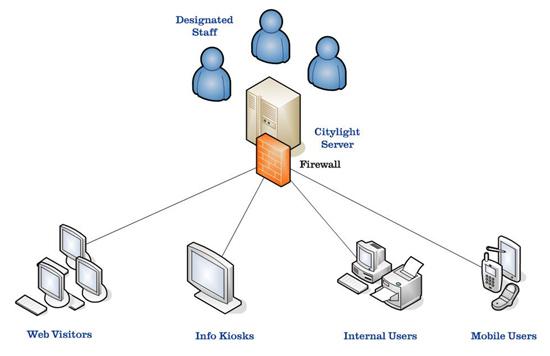
2. Find out what the ubiquitous network is. Make a report describing the picture.
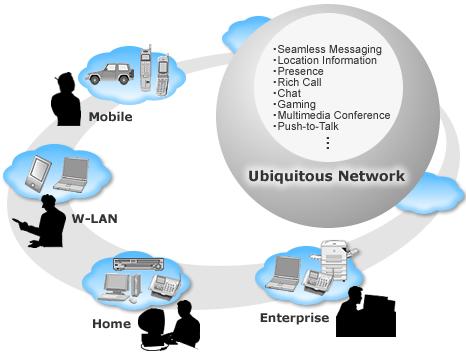
3. Choose any topic you like and make a report:
1. Have you ever used a multimedia encyclopedia? Visit some and point out the most important features about them. Describe the type of the encyclopedia, structures and ways of usage.
2. Speak on the advantages and disadvantages in using multimedia/networks in education /business /presentations /medicine and etc.
3. Do you like video and computer games? Speak on you favourite ones. Give characteristics. What multimedia/network applications and tools are used in these games?
4. What are the advantages and disadvantages in using networks? How can they be classified?
5. Development of the network began in 1969, based on designs developed during the 1960s. Find the information and speak on ARPANET, the first network.
6. The information about some basic physical topologies was given above. There are some other shapes of networks. Characterize them.
FUN AND GAMES SECTION
1. Solve the clues and complete the puzzle.
|
|
|
1 |
|
|
|
|
|
|
|
|
|
|
|
|
|
|
2 |
|
|
|
|
|
|
|
|
|
|
3 |
|
|
|
|
|
|
|
|
|
|
|
|
|
4 |
|
|
|
|
|
|
|
|
|
|
|
|
|
5 |
|
|
|
|
|
|
|
|
|
|
|
6 |
|
|
|
|
|
|
|
|
|
|
|
|
7 |
|
|
|
|
|
|
|
|
|
|
|
|
8 |
|
|
|
|
|
|
|
|
|
9 |
|
|
|
|
|
|
|
|
|
|
|
|
|
10 |
|
|
|
|
|
|
|
|
|
|
1. A series of still images shown in sequence.
2. … files are processed by sound software.
3. In medicine, doctors use virtual … systems to simulate particular situations.
4. The suffix placed after a dot at the end of a filename.
5. A format used to compress and transmit movies over the Web.
6. People use special programs to … and decompress files so that they occupy less disk space.
7. A video format developed by the Moving Picture Experts Group.
8. A system of filming, processing and showing moving pictures.
9. .gif stands for … interchange format.
10. The technique which allows you to play music and watch video before the entire file has downloaded.
Down: The combination of moving and still images, sound, music and words.
HUMOR SECTION
What does the cartoon about virtual private network imply? Why is it funny, in your opinion? Explain its humour.
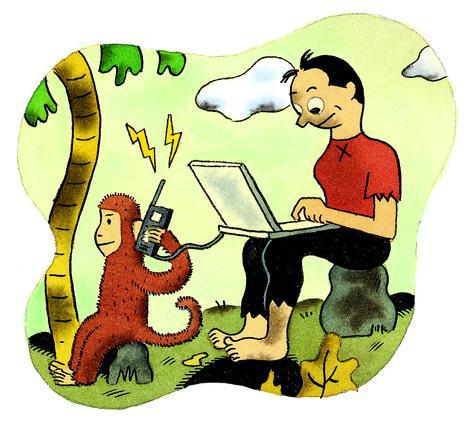
|
|
WEB DESIGN |
KEY INFORMATION SECTION 1
|
|
|
|
Web design is used as a general term to describe any of the various tasks involved in creating a web page. More specifically, it refers to jobs focused on building the front-end of a web page.
The web consists of myriad pages, presenting information using different technologies and linked together with hyperlinks. There are two basic aspects to any web page found on the Internet. The first is a presentation that the user interacts with, usually visually, while the second is a back-end that includes information for non-human browsers.
The basic markup languageused to tell a browser how to present information is called theHyperTextMarkup Language (HTML), which is interpreted by a web browser to produce hypertext, a blend of text, graphics and links. In more details HyperTextMarkup Languageis:
Hyper is the opposite of linear. In the good old days - when a mouse was something the cat chased - computer programs ran linearly: when the program had executed one action it went to the next line and after that, the next line and so on. But HTML is different - you can go wherever you want and whenever you want. For example, it is not necessary to visit MSN.com before you visit HTML.net.
Text is self-explanatory.
Mark-up is what you do with the text. You are marking up the text the same way you do in a text editing program with headings, bullets and bold text and so on.
Language is what HTML is. It uses many English words.
A stricter version of HTML is also widely used, known as eXtensible HyperText Markup Language (XHTML). Using HTML or XHTML, a web designer is able to tell a browser how a web page should appear.
|
|
One can view the source or raw HTML code by choosing the View Source option in your web browser. To build a website you could learn how to write HTML tags, the coded instructions that form web pages, or else use an HTML editor, a WYSIWYG (What You See Is What You Get) application that converts a visual layout into HTML code. A simpler option is to use a web template provided by |
a web-based site builder, where you just fill in the information you want on the page.
|
There is tendency of separating the underlying structure of a web-page (using HTML) from the visual presentation of the site (using Cascading Style Sheetsor CSS). This approach has a number of major benefits in both the short and long term. From a technical standpoint, the act of web design can be quite difficult. Unlike more traditional print media, HTML has a number of |
|
variable factors.
To begin with, not all browsers interpret HTML according to the standards created by the standard-setting body — the World Wide Web Consortium, also known as W3. This means that while one piece ofweb design will appear as the designer wishes it to in one browser, it may appear completely differently in another. Another major limiting factorofweb design is the plethora of formats a site might be viewed in. While graphic designersknow exactly how large the piece of paper they are printing on will be, aweb designer must account for different monitor sizes, different display settings, and even browsers for non-sighted surfers. Combined, these concerns often leave a web designer struggling to incorporate enough dynamism to make a web page attractive on a range of browser sizes, while creating a layout static enough to allow for the use of images and other necessarily fixed-size components.
In addition to XHTML and CSS, web designers often use a number of database driven languages to allow for more dynamism and interactivity on their websites. While useful with smaller sites, database driven languages become a virtual necessity on any site presenting huge amounts of data. Some of the most popular languages for “dynamic” web design include ASP (a proven, well-established technology for building dynamic Web applications, which provides the power and flexibility you need to create anything from a personal, Web based photo gallery to a complete catalogue and shopping cart system for your next eCommerce project), PHP (a widely-used general-purpose scripting language that is especially suited for Web development and can
|
|
be embedded into HTML), and ColdFusion Mark-up (a tag-based language, similar to HTML, that uses special tags and functions). Macromedia's Flash also allows a different sort of web design and is very popular amongst many web designers. The possibilities for web design are virtually limitless, although at one |
point they were quite constrained by the boundaries of the browser itself. With the advent and flexibility of Flash and other embedded technologies, these boundaries have been all but removed, allowing for a versatility and dynamism that challenges the imagination of anyone interested in web design.
|
There are some special formats to place different files on the web page. RSS (most commonly expanded as Really Simple Syndication) is a family of web feed formats used to publish frequently updated works - such |
|
as blog entries, news headlines, audio, and video - in a standardized format. An RSS document (which is called a "feed", "web feed", or "channel") includes full or summarized text, plus metadata such as publishing dates and authorship. Web feeds benefit publishers by letting them syndicate content automatically. They benefit readers who want to subscribe to timely updates from favored websites or to aggregate feeds from many sites into one place. RSS feeds can be read using software called an "RSS reader", "feed reader", or "aggregator", which can be web-based, desktop-based, or mobile-device-based.

